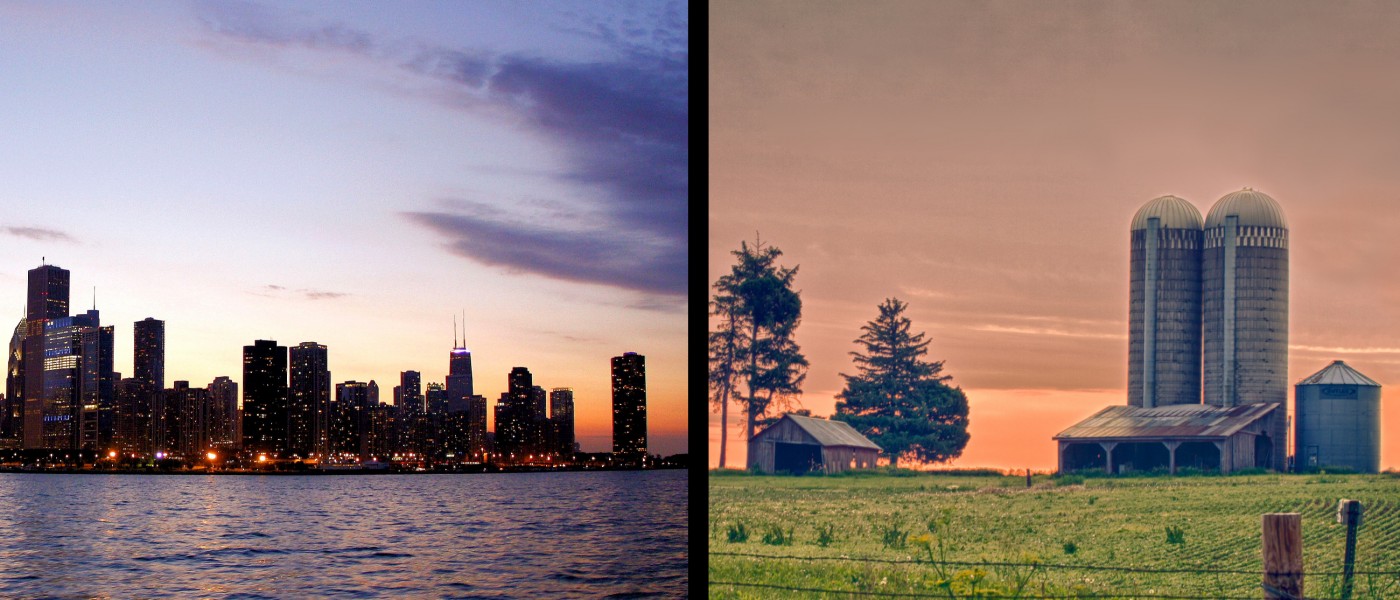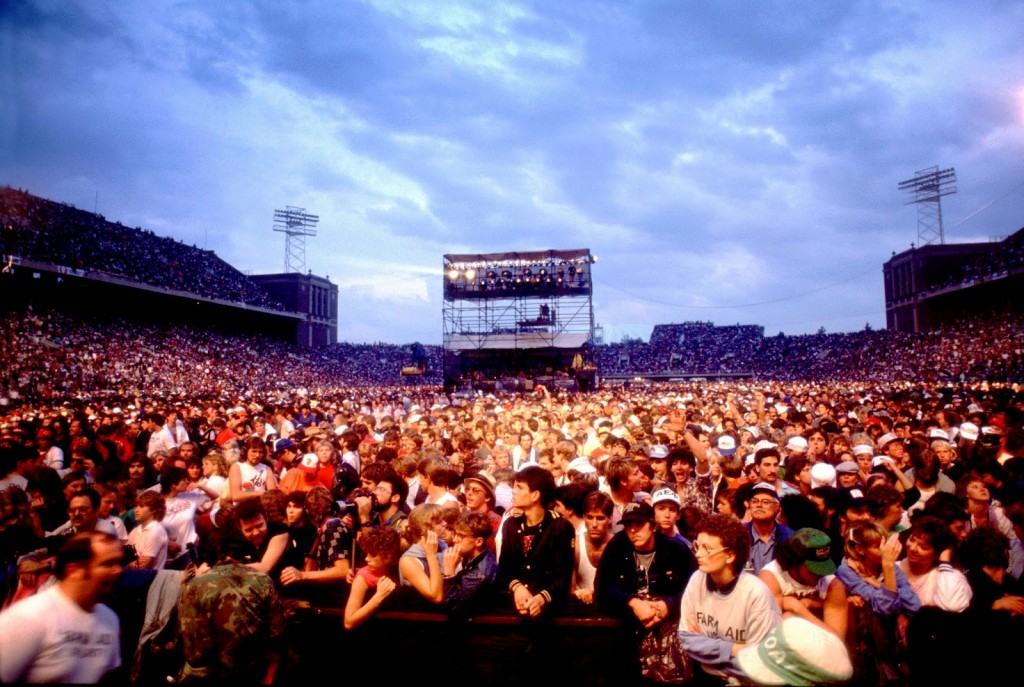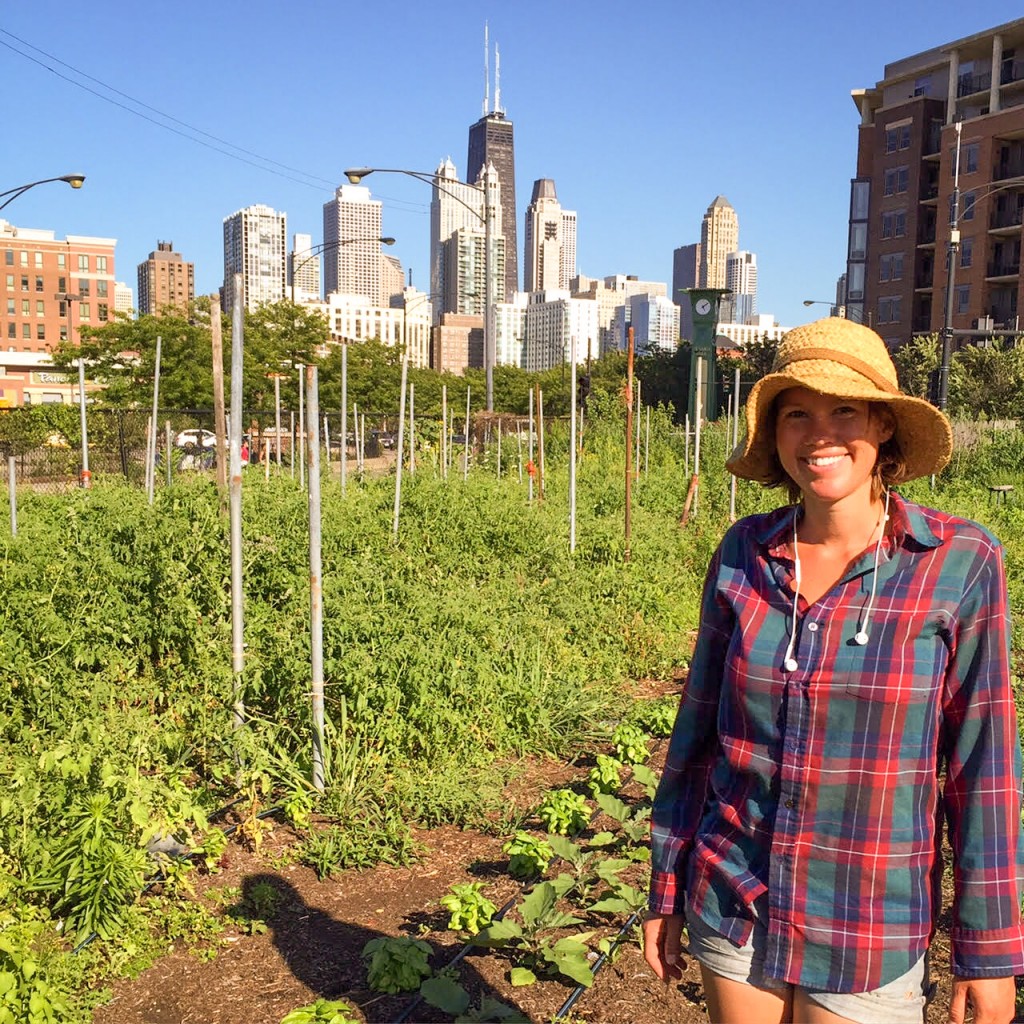In the summer of 1985, as Willie Nelson organized a concert to support America’s family farmers, he imagined Chicago as the host city. At the center of America’s Heartland, Chicago seemed like the perfect place to gather the country’s farmers and raise awareness about the issues family farmers were facing in the midst of the 1980s Farm Crisis. In talking with then-Illinois Governor Jim Thompson, however, Willie became convinced he should hold the concert in Champaign, closer to the state’s farm country.
In the years following, the concert moved around the country, fulfilling Willie Nelson’s hope that farmers everywhere could take part in the event that honored their hard work. This strategy proved to be an effective way to reach diverse audiences – rural and urban alike – to spotlight different farming regions throughout the country and deepen our grassroots connections to folks making change in food and agriculture.
As Farm Aid returns to Illinois to celebrate our 30th anniversary in Chicago, we celebrate our collective success in bringing urban and rural citizens together to support family farm agriculture and food systems that truly benefit everyone. We are heartened by the growing awareness of how our rural communities and our cities are connected, and how farmers and eaters are now linked in ways that could not have been imagined at the time of the first Farm Aid concert.
The Same Challenges
Even after 30 years of sustained work by so many of us to strengthen family farm agriculture, significant challenges remain. Family farmers continue to face extreme economic pressure and many are pushed off the land each year. When family farms are forced out, the quality of our food, the health of our soil and water, and the strength of our economy are all at stake.
Growing corporate power and consolidation in the food system continues to drive a deep wedge between America’s 320 million eaters and 2 million farmers. Fewer companies own more and more of the market, a trend that increases costs to consumers and drives down the prices farmers receive, siphoning money away from family farmers and communities that depend on them.
In addition, minorities, people of color and other socially or economically disadvantaged communities – both rural and urban – still face systemic racism and disparities that can be seen and felt in the food system. Persistently poor rural areas, which are more frequently populated by black, Latino, immigrant and Native American communities experience diet-related illnesses, land grabs and resource extraction that harm farmland, pollution from factory farms, and population loss at higher rates than others – although rural communities of all kinds increasingly face these threats too. Likewise, minority neighborhoods in urban areas disproportionately face challenges like food deserts, diet-related illnesses, and environmental degradation.
The good news, of course, is that all of this can be turned around through agriculture.
Reclaiming our Power through Food
Family farmers in rural America and those working to rebuild urban food systems face similar struggles in a corporate dominated system. But people from both communities across the country are finding success and reclaiming their power through food and farming.
Worldwide, 800 million people grow food in cities, producing 15-20 percent of the world’s food.[1] Here in the U.S., urban farming can have a tremendous impact in neighborhoods where land is cheap, incomes are lower and the need for healthy food is high. One economist estimates that Detroit, home to around 700,000 residents, could grow the majority of its current fruit and vegetable consumption if food were grown intensively on its more than 100,000 vacant lots.[2] In 2014, Detroit’s already vibrant farm and gardening community produced nearly 400,000 pounds of produce.
In Chicago, a thriving network of community and rooftop gardens, public orchards and commercial farms nourish city dwellers with millions of pounds of produce each year and redefine how urban areas can look and function in America. There are at least 51 urban farms and food-producing gardens in Chicago,[3] while the city has also passed critical ordinances to allow rooftop farms and develop urban agricultural zones. In cities starved for green spaces, zones like those designated in Chicago can be important to reinforcing a sense of community and connection to the natural world.
While industrial farming systems drain money out of local economies, family farms keep wealth close to home.
Rural communities are also reversing negative trends through the profound potential of family farms and regional food systems. While industrial farming systems drain money out of local economies, family farms keep wealth close to home. According to the Center for Rural Affairs, one family farm contributes $720,000 to the local economy and on average, 7 farms support 1 town business.[4] Research at Iowa State University examined a six-state Midwestern region including Illinois, Indiana, Iowa, Michigan, Minnesota and Wisconsin and found that increased fruit and vegetable production could:
- Boost regional farm sales by more than $882 million
- Spur retail-level sales as high as $3.31 billion
- Create 9,032 farm-level jobs and 9,652 retail-level jobs
- Generate $395.1 million in farm-level labor income and $287.6 million in retail level labor income
Studies like this suggest the transformative potential of a more diversified food system for economic rejuvenation.[5]
While urban agriculture can’t match the immense production capacity of rural areas, city growers and gardeners contribute significantly to urban food systems and deepen urban understanding of the struggles rural farmers face. As more people participate in urban agriculture, they increase their knowledge about food — where it comes from, how much goes into producing it, and how to prepare it. And in both urban and rural areas, young people are becoming inspired to take up farming or food-related fields as careers. This is especially crucial in rural areas where the average age of farmers continues to climb (currently age 58) — as Willie Nelson always says, we need more farmers!
In all corners of the country, access to more nutritious diets and an appreciation for farm fresh food builds a culture that counteracts the increasing trends of diet-related illnesses and strengthens the fabric of our communities. Rural and urban citizens alike are developing food policy councils committed to bringing fresh, healthy foods to people who need it.
According to the National Farm to School Network, 44 percent of all U.S. schools have developed a farm to school program of some kind, replacing packaged, processed meals with farm fresh foods for our nation’s students.[6] The proliferation of farmers markets, gathering farmers and eaters together in vibrant centers of commerce and culture is also noteworthy. Since Farm Aid started, the number of farmers markets has grown by almost 80 percent to 8,268 markets nationwide.[7]
Building our Farm Future, Together
These are extraordinary changes. In our increasingly distracted, fast-paced, hyper-connected yet personally isolating world, people are re-rooting and reconnecting through food and farming. Just like music, food has an amazing ability to bring people together.
Just like music, food has an amazing ability to bring people together.
When Farm Aid started out in 1985, family farmers were being told they were a thing of the past. In fact, the government’s mantra to farmers was “get big or get out,” touting corporate agriculture and industrialization over rural community well-being and a family farm-centered agriculture system. The consequences of that attitude are still being felt in both rural and urban corners of America.
In many ways, the pro-corporate refrain still governs our food system – most certainly in the political and economic spheres. But increasingly in rural and urban corners of the country, people are deepening their understanding of how the food on our plate ties us to broader changes and struggles in the world. They are asserting that the corporate-dominated system is not the way forward – family farms and food systems rooted in their great strength are our true future.
Citizens nationwide are making inspiring and critical changes. It is time we all celebrate the vital contributions of rural and urban farmers, and all those who are taking their power back through food and farming. Together, with concerted efforts big and small, we’ll rebuild thriving family farm-centered food systems throughout the country.
Sources
- United National Food and Agriculture Organization. http://www.fao.org/urban-agriculture/en/
- Michael Hamm.
- Advocates for Urban Agriculture. (n.d.). Chicago urban agriculture directory. Retrieved from http://auachicago.org/resources/chicago-urban- agriculture-directory/
- http://www.cfra.org/community-development
- Swenson, D. (2006). The Economic Impacts of Increased Fruit and Vegetable Production and Consumption in Iowa: Phase II. Leopold Center for Sustainable Agriculture. Ames, Iowa, Iowa State University. Swenson, D. (2010). Selected Measures of the Economic Values of Increased Fruit and Vegetable Production and Consumption in the Upper Midwest. Leopold Center for Sustainable Agriculture. Ames, Iowa, Department of Economics, Iowa State University.March 2010.
- Estimated based on data from the USDA Farm to School Census for the 2011 – 2012 school year.
- U.S. Department of Agriculture, Agricultural Marketing Service. (2014). Farmers markets and local food marketing.
To honor the hard work of farmers, eaters, activists and advocates, we launched the #Road2FarmAid, a virtual campaign inviting people to share the actions they are taking to support family farmers and grow the Good Food Movement.
Further Reading
- Learn how Courtney Hennessy and John Stoddard of Higher Ground Farm are growing fresh food on a rooftop in Boston. “This is all just a new way of making change in the world.”
- Living Water Farms is bridging the gap between rural and urban communities every day, as it delivers its family farm food to its own community and people in Chicago. “Our food system has evolved and has gotten away from people knowing how their food is raised and where it comes from.”
Next
Living Water Farms




